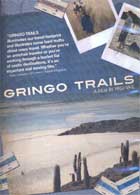
Gringo Trails 2013
Distributed by Icarus Films, 32 Court St., 21st Floor, Brooklyn, NY 11201; 800-876-1710
Producer n/a
Directed by Pegi Vail
DVD , color, 79 min.
College - General Adult
Travel and Tourism, Biodiversity, Conservation, Sustainable Living, Tourism Industry
Date Entered: 02/19/2015
Reviewed by Linda Frederiksen, Washington State University, Vancouver, WAIn 2014, over 1.1 billion people traveled abroad, according to the United Nations World Tourism Organization (UNWTO). These globe trekkers generate nearly $2 billion per year, with many travel benefits driving local economies. Despite this booming business, there are significant long-term problems associated with global tourism.
For some destinations in South America, Asia, and Africa, it may already be too late. In places like Salar de Uyuni in Bolivia and Koh Pha Ngan Island in Thailand, distinctive geographic, environmental, and cultural features have been destroyed by armies of backpackers and other tourists who follow the loosely-defined Gringo Trails. Beginning and ending her thoughtful essay on the consequences of global travel in the Amazonian jungle of Bolivia, anthropologist and filmmaker Vail asks the question: are tourists saving the planet or destroying it?
There are some bright spots, such as Bhutan, with its High Value/Low Impact visitor’s fee and the locally managed and sustained Chalalán Ecolodge in Bolivia. The negative examples of thoughtless tourism, however, abound. One example is the ruin of the once-pristine Thai beach of Haat Rin. Now the site of Half Moon and Full Moon Parties that regularly attract tens of thousands of young people from around the world, the environmental and cultural destruction left in their wake is sobering.
Combining interviews with travel writers, scholars, local residents, and tourists, the message here is clear. Communities, especially those most vulnerable to the effects of too many people with too much money need to plan for tourism before they are overwhelmed by it. Similarly, visitors traveling to these unique and fragile locations must educate themselves on how to take from these places, to paraphrase Chief Seattle, only memories and leave behind only footprints. Required viewing for anyone with a travel backpack. Highly recommended.